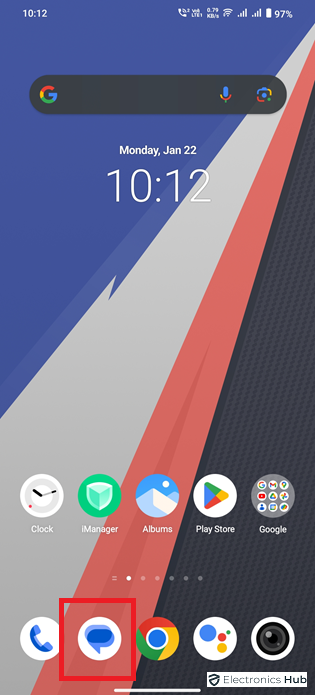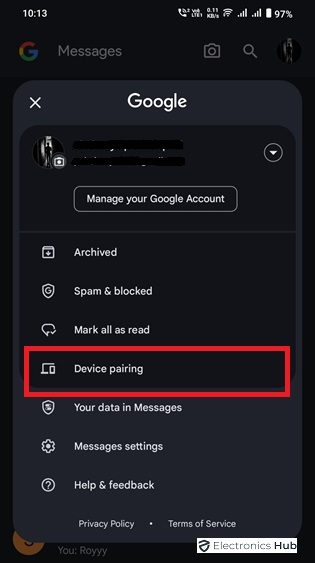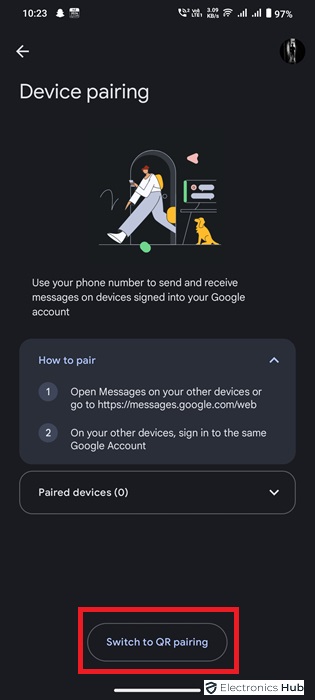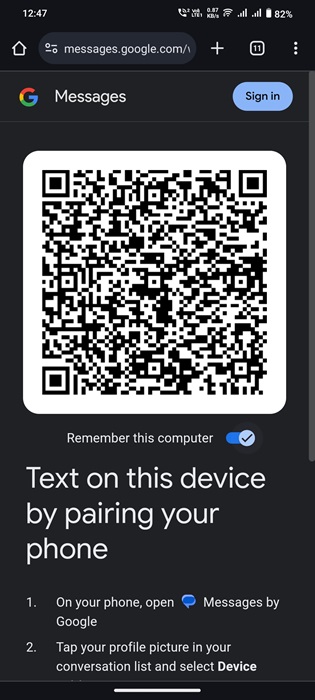In our rapidly evolving digital world, staying connected and keeping tabs on our communications is more crucial than ever.
Imagine having the ability to effortlessly monitor and manage your text messages from anywhere, at any time. Whether you’re a vigilant parent overseeing your child’s safety, someone nurturing a long-distance relationship, or a busy professional coordinating work communications, the capability to check text messages remotely is not just a convenience –it’s a significant improvement. Intrigued?
This guide is designed just for you. We’ll walk you through the seamless process of remote message access, showcasing its ease and efficiency. Stay tuned, as we reveal how this essential tool can simplify your daily communication and bring a newfound sense of control and connectivity to your life.
Outline
Toggle- Understanding the Basics of Remote Message Access
- How to Use Google Messages for Remote Access Video Tutorial
- How to Use Google Messages for Remote Access
- Troubleshooting Common Issues
- Alternatives to Google Messages for Remote Text Access
- Maximizing Security and Privacy
- Check Text Messages Remotely on Your Phone – FAQS
- Conclusion
Understanding the Basics of Remote Message Access
What Does It Mean to Check Text Messages Remotely?
Remote text message access is a technology that enables you to view, send, and receive SMS from one phone using another device, like a computer or tablet. This is achieved via an internet-based synchronization between your phone and the secondary device, allowing a seamless cross-platform messaging experience.
Why Remote Text Message Access Can Be Useful?
This feature’s usefulness spans numerous scenarios. Parents can monitor their children’s interactions for safety reasons, employers can oversee business communications, and those in long-distance relationships can maintain constant communication. Remote text access also proves invaluable for people who need to access their messages but can’t use their phones, like during meetings or in areas with restricted phone use.
How to Use Google Messages for Remote Access Video Tutorial
How to Use Google Messages for Remote Access
Getting Started with Google Messages Web
- The first step is to ensure your Android phone has Google Messages installed.
- This app is compatible with most modern web browsers, including Chrome, Firefox, Safari, and Microsoft Edge.
Step 1: Setting Up Your Device
- Launch Google Messages on your phone.
- Tap your “profile icon” in the top right corner, then select “Device Pairing.”
- This action prepares your phone to establish a secure link with another device.
Step 2: Pairing Devices via QR Code
- Next, on your secondary device (computer or tablet), navigate to “Google Messages“. This page will display a QR code.
- Use the “QR Code scanner” in the Google Messages app on your phone to scan this code.
- This simple step securely links your messaging system to the web interface.
Step 3: Viewing Messages on Your Phone
- Your text messages will now be accessible on the secondary device’s screen.
- Here, you can effortlessly browse through conversations, send new messages, and manage your SMS inbox just as you would on your phone.
Legal Considerations in Monitoring Text Messages
- Know Your Jurisdictional Laws: The legality of monitoring text messages varies significantly by location. In many areas, it’s legal to monitor the digital activities of your minor child, but it’s crucial to be aware of the specific laws in your region.
- Consent is Key: In some jurisdictions, particularly when dealing with teenagers, obtaining consent may be a legal requirement. This can vary but is a crucial aspect of lawful monitoring.
- Workplace Monitoring: For employers, it’s legal to monitor business-related texts on company-provided devices. However, transparency and clear policies about this monitoring are essential to maintain trust and legal compliance.
- Impact of Misuse: Unlawful or unethical monitoring can lead to serious legal consequences, including fines and imprisonment. It’s also important to consider the potential for damaging personal and professional relationships.
Ethical Considerations in Monitoring Text Messages
- Respect for Privacy: Striking a balance between safety and privacy is crucial. Over-monitoring can breach trust and damage relationships, especially with older children or in a work environment.
- Building Trust Through Open Communication: Monitoring should be a tool for teaching responsible digital behavior rather than a means of control. Engaging in open dialogues about online safety and the reasons behind monitoring can foster trust.
- Consider the Implications: Accessing someone’s text messages, even legally, involves ethical considerations such as privacy, consent, and the potential impact on relationships.
- Technical and Ethical Knowledge: Understanding the technology you’re using for monitoring and its capabilities is essential. Equally important is the ethical use of this technology, ensuring you’re not overstepping boundaries or misusing the information obtained.
Real-World Implications and Recommendations
- Early Detection of Issues: Such as cyberbullying, can be crucial for child safety. However, it’s also essential to use these tools judiciously and maintain open communication.
- Legal Advice: Always consult legal professionals to understand the implications and legality of accessing text messages, especially without consent.
- Responsible Use: If monitoring is necessary, use the information responsibly and consider the impact on trust and relationships.
Troubleshooting Common Issues
- Stable Internet Connection: This is the foundation of remote message access. If you’re experiencing failed pairings or message sync problems, double-check that both your phone and secondary device have a stable and strong internet connection. Sometimes, switching from Wi-Fi to a mobile data network, or vice versa, can resolve connectivity issues.
- Restarting the App and Refreshing the Web Page: If the first attempt at pairing fails, or messages aren’t syncing properly, try restarting the Google Messages app on your phone and refreshing the messages page on your web browser. This can help reset the connection and solve temporary glitches.
- Updating Google Messages App: Outdated apps can lead to a host of problems. Make sure that your Google Messages app is updated to the latest version. Updates often include bug fixes and improvements that can resolve existing issues.
- Checking Browser Compatibility: While Google Messages works with most modern browsers, it’s still a good idea to check if your browser is fully compatible. Sometimes, using a different browser can be the key to a successful pairing.
- Clearing Cache and Cookies: Over time, cache and cookies can accumulate and potentially disrupt the functionality of web services. Clearing your browser’s cache and cookies might help resolve some issues.
- Disabling Browser Extensions: Some browser extensions, particularly those related to security or ad-blocking, can interfere with the functioning of web-based applications. Try disabling these extensions temporarily to see if it resolves the issue.
- Checking for Interference from Other Apps: Other apps running on your phone or computer might interfere with the remote access functionality. Close unnecessary apps to see if this improves performance.
- Reinstalling the App: If all else fails, uninstalling and then reinstalling the Google Messages app can sometimes work wonders. This gives you a clean slate and can resolve deeper issues.
- Consulting Online Forums and Support: If you’re still facing issues, online forums and Google’s support page can be valuable resources. Often, other users may have encountered similar problems and found solutions.
- Device Compatibility: Ensure that both your phone and the secondary device meet the minimum system requirements for Google Messages. Some older devices may not fully support all features.
Also Check:
- Schedule A Text Message on iPhone & Android
- Sync Messages From iPhone To Mac
- Add Someone to a Group Text in iMessage
Alternatives to Google Messages for Remote Text Access
Other Reliable Apps and Services
While Google Messages is a popular choice, there are other apps like WhatsApp Web, Telegram Desktop, and various SMS tracker tools that offer similar functionalities. Each of these alternatives comes with its own set of features and user interfaces, so it’s worth exploring to find the one that best suits your specific needs.
Maximizing Security and Privacy
When utilizing remote access features, it’s crucial to prioritize security and privacy. Opt for strong, unique passwords for your accounts, and consider enabling two-factor authentication for an added layer of security. Be cautious when using public Wi-Fi networks for accessing personal messages to avoid potential security breaches. ” Add more information as I mentioned above.
Check Text Messages Remotely on Your Phone – FAQS
Ans: The legality of remotely checking someone else’s text messages varies by jurisdiction. Generally, you must have consent from the person whose messages you wish to access. It’s always best to consult legal advice specific to your region to understand the laws.
Ans: Remote text message checking typically works on smartphones with compatible apps like Google Messages, WhatsApp, and Telegram. The availability and functionality might differ based on the phone’s operating system, such as Android or iOS.
Ans: It depends on the method you choose. Services like Google Messages for Web do not require additional software on the computer but do require the Google Messages app on the phone. Other methods might require specific apps or software installations.
Ans: Most ethical and legal approaches to remotely checking text messages involve the phone owner’s knowledge and consent. Stealth monitoring without consent can violate privacy laws and ethical standards.
Ans: The primary risks involve security and privacy concerns. Ensuring secure internet connections and using reliable apps are crucial to mitigate these risks. Also, respecting privacy and legal boundaries is important.
Ans: Use strong, unique passwords, enable two-factor authentication, and only use secure Wi-Fi networks. Be cautious about the permissions you grant to apps and use services that offer end-to-end encryption.
Conclusion
Remote text message checking is a powerful tool in our connected world, offering convenience, oversight, and peace of mind. By following the steps outlined in this guide and considering the ethical implications, you can safely and effectively stay connected to your important conversations. For more insightful guides and tech tips, don’t forget to subscribe to our channel, where we regularly update content to keep you informed in the digital age.





